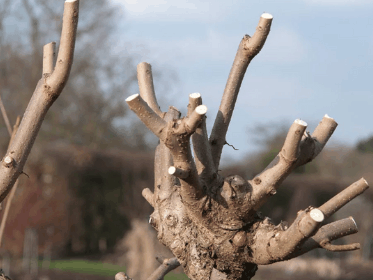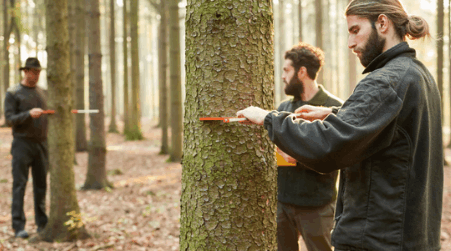
When there's a problem with a tree, who do you call to sort it out? Do you require the assistance of a tree surgeon or arborist? Is there even a difference between an arborist and a tree surgeon?
If you've been asking this question, or you're simply curious, this Tree Surgeon Pro blog should be right up your street!
We're dissecting both roles to give a full explanation of what's involved. So, take five minutes to read this article and learn exactly what each one does. Then, if you ever need assistance, you'll be able to go to the right source!
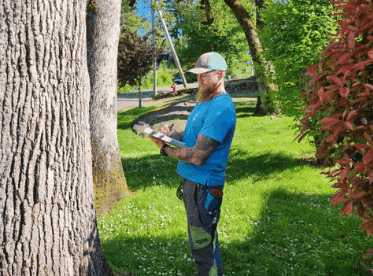
To begin with, both terms are often used interchangeably, which is confusing. Although it isn't very helpful, it is perhaps understandable as the two roles overlap, and some fully qualified tree surgeons are also certified arborists!
Also, many tree care companies employ both tree surgeons and arborists, as this allows them to offer a fuller range of services.
So, let's bring some clarity to the matter with a thorough examination of what each role involves...
There's a hint in the name: surgeon.
Humans are operated on by surgeons who make precise incisions, removing diseased or damaged tissue and organs in order to make the patient well again. In essence, what do tree surgeons do? They perform a similar role, but for trees and shrubs!
All professional tree surgeons are highly trained in the practical aspects of tree work. Their skills are grounded in the physical aspects of tree maintenance, such as climbing, pruning, felling, section dismantling, stump grinding and storm-damage clearance. They work with chainsaws, rigging systems, wood chippers and more. It’s tough, often dangerous work that requires precision, strength and a solid understanding of safety procedures.
That said, good tree surgeons also have a working knowledge of tree biology and pathology. They need to understand what they’re cutting and why, or they risk doing more harm than good. But their focus is generally more hands-on than diagnostic.
Many tree surgeons start with vocational training, such as the City & Guilds NPTC qualifications in chainsaw use and climbing, or diplomas/degrees in forestry and arboriculture. Experience and ongoing extensive training are also essential, especially given the health and safety regulations in the industry, which is why tree care experts like Tree Surgeon Pro invest in career development and training schemes for all staff.
But what kind of tree surgery projects do they actually perform?
Here's a list to give you an idea:
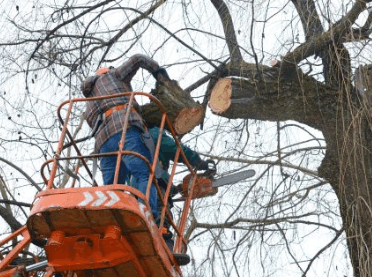
This isn’t just about making a tree look nice, although aesthetics does play a part in it, especially in gardens, parks or public spaces where appearance matters. But proper tree pruning is far more than a cosmetic tidy-up. It’s a skilled task that requires knowledge, care, and an understanding of how trees grow and respond to cutting. When is the worst time to prune trees in the UK and when is the best time to prune trees in the UK? These are crucial questions for tree health, as improper timing can lead to issues like disease or stunted growth.
But did you know there are several different methods? Tree surgeons always know the best way to prune trees, and when to do it, using a range of methods such as:
This involves selectively removing smaller, internal branches to allow more natural light to filter through the canopy and to reduce wind resistance. It helps the tree stay more stable in high winds and creates a lighter, more open shape.
With this method, the lower branches of a tree are removed, which can improve sightlines, create clearance over paths, driveways or roads, and allow more light to reach ground-level plants or lawns.
This is the process of cutting back the height or spread of the tree’s canopy while retaining its natural form and structure. It’s often used when a tree has outgrown its space or needs to be kept clear of buildings or power lines.
This traditional method involves the careful removal of upper branches (sometimes right back to the trunk). When carried out correctly, it promotes healthy growth of new, smaller branches, prolonging the life of the tree and helping to stop branches from affecting nearby buildings or power lines.
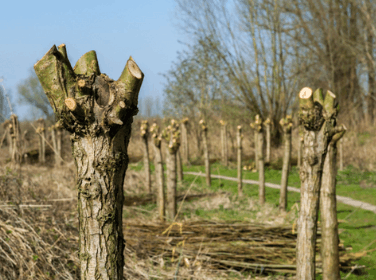
Taking out dead, diseased or damaged limbs is essential not just for the health of the tree but for safety too. Falling branches can pose serious risks to people, vehicles, buildings or neighbouring plants.
When done properly and at the right time of year, pruning doesn’t just tidy up a tree, it encourages strong, healthy growth, reduces the risk of disease, and improves the overall health, structure, stability and long-term balance of the tree. In many ways, it’s like giving a tree a well-considered haircut, but one that supports both beauty and wellbeing!
Most tree surgeons also offer hedge work, from simple trimming to full reshaping, or even reducing very large, overgrown hedgerows that have been left to run wild. It’s all about keeping your boundaries looking neat, tidy and healthy, whether it’s a formal garden hedge or a sprawling rural boundary that needs a bit of care.
Although they prefer to treat trees and keep them healthy whenever possible, tree surgeons regularly have to deal with the safe removal of trees for a variety of reasons, from disease and decay to storm damage, structural issues or development projects.
It can be a potentially hazardous process, requiring the right equipment, technical expertise and a calm, methodical approach, especially in environments where space is limited or the tree is close to buildings, power lines or public areas.
Once a tree is felled, you’re left with the stump, and these can be unsightly, hazardous, or even regrow new shoots that turn into young trees. Tree stump removal cost can vary depending on the size and location of the stump, but tree surgeons often use specialised stump grinders to shred the remains, sometimes a few inches below ground level, leaving the area tidy and ready to replant, pave, or landscape.
It can be a messy, hazardous job, but in the capable hands of a fully trained tree surgeon, it's completed quickly and safely.
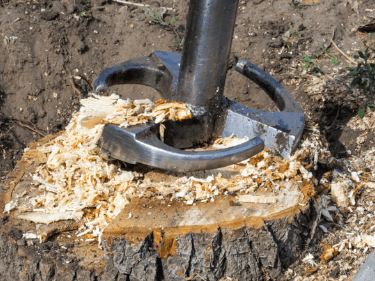
After storms, heavy winds or other extreme weather, fallen or damaged trees can pose serious risks, so tree surgeons are often called out to deal with trees blocking roads or damaging property.
Sometimes a tree can be saved rather than removed, in which case, tree surgeons can install cabling or bracing systems to support weak branches or splitting trunks, helping trees survive for many more years.
Many tree surgeons are also involved in planting new trees, especially as part of conservation or landscaping projects. They’ll know the right species for the soil and environment and how to give young trees the best possible start.
This often happens after stump removal or tree felling, where the space is replanted.
Arborists, also called arboriculturalists, are essentially tree scientists! This job title goes beyond the practical aspect and into the academic.
It’s about understanding the biology and ecology of trees, how they grow, how they interact with their environment, and how to manage their health in both the short and long term.
Arborists are trained in arboriculture, which is the science and practice of cultivating, managing, and studying individual trees, shrubs, vines, and other perennial woody plants. They assess tree health, diagnose tree diseases and pests, recommend treatment plans, evaluate risk (such as the likelihood of a tree falling in a storm), and make decisions about conservation or removal.
You’ll often find arborists working in a consultancy role, such as advising local councils, landowners, architects, and developers. They might conduct tree surveys for planning applications, oversee protected trees (such as those with TPOs - Tree Preservation Orders), or produce reports for legal cases involving trees. They can also inspect and assess trees, shrubs and soil, and then recommend work that needs to be done.
Qualifications for arborists tend to be more academic. Many hold diplomas or degrees in arboriculture, forestry, or environmental science, and are members of a professional organisation like the Arboricultural Association in the UK.
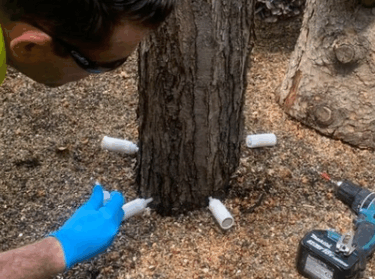
Now we've got a handle on the difference between a tree surgeon and an arborist, which one is the right choice?
The fact is that both arborists and tree surgeons are equally valuable, and between them they can manage a huge range of tree care work.
It’s worth noting again that the roles aren’t always so clearly divided. In the real world, many professionals wear both hats. A qualified arborist might also climb and carry out surgical work, while an experienced tree surgeon may have studied arboriculture and offer consulting services.
Let's break it down into more practical terms:
So, to put it simply: an arborist is like a GP or consultant for trees, understanding the deeper biological and ecological picture; a tree surgeon is more like a specialist technician or paramedic, coming in to carry out the necessary operations.
Both roles are vital and often collaborative. And in the UK, where trees are deeply entwined with our landscapes, laws and heritage, these professionals play a crucial role in keeping our treescapes safe, sustainable and thriving.
If you're ever unsure which you need, ask yourself: Do I want advice, analysis, or a report? (Call an arborist.) Do I need something cut, pruned, or removed? (Time to call a tree surgeon.)
In the end, whether you need a tree surgeon or an arborist, be sure to choose wisely! Some tree "experts" are not fully qualified or equipped to offer a professional service, which is especially important when carrying out commercial work.
If you need clarification on any of the above points or wish to take advantage of our expertise, the Tree Surgeon Pro team would love to hear from you!
